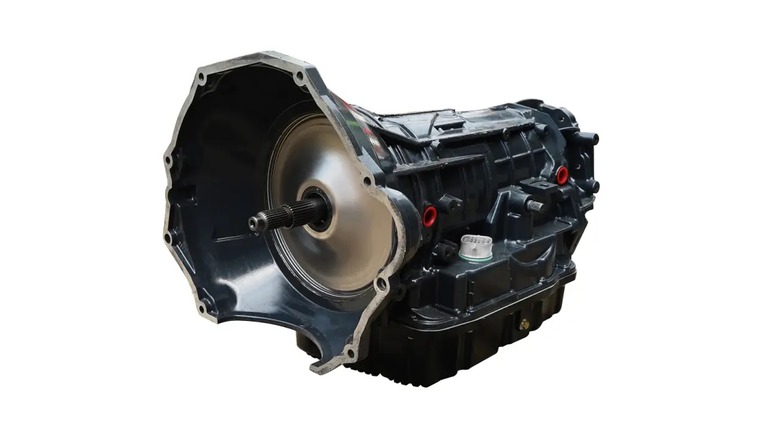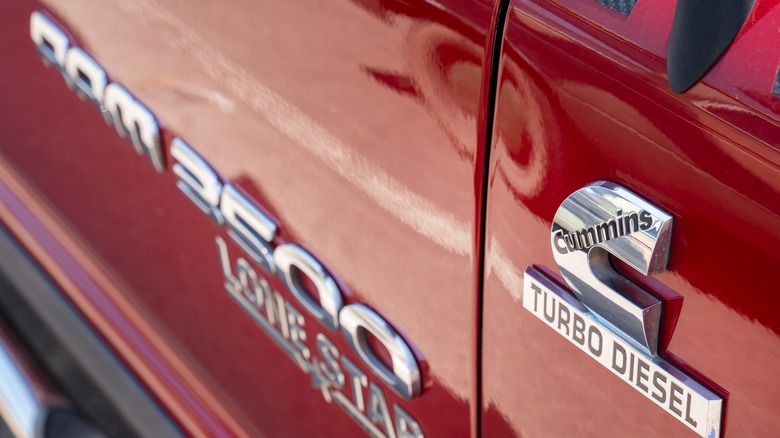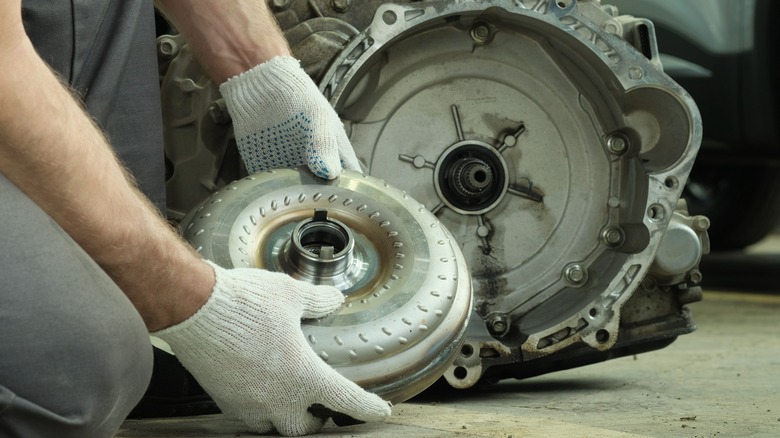All About The Chrysler 68RFE Transmission
Transmissions matter a lot when it comes to diesel trucks. That's because pulling power isn't just limited by the power and torque of the engine, but also by the strength of the transmission responsible for delivering that power and torque to the wheels. As a result, most diesel truck owners want to know that their truck has a solid transmission behind their engine, especially if heavy towing is a part of the equation.
For the first 18 years after Chrysler/Dodge teamed up with the legendary diesel engine manufacturer Cummins in 1989, Chrysler didn't have an automatic transmission that could keep up with the performance of the motors that Cummins provided. Until 2007, Chrysler mated their Cummins diesel power plants to beefed-up TorqueFlite muscle car transmissions in the form of the 4-speed 727, A518, 47RH, 47RE, and 48RE transmissions. While simple and reliable designs, the Cummins continued to get more powerful, making the old 4-speeds look like fragile antiques in comparison. It also didn't help that both GM and Ford upped the ante in the early 2000s with their 5-speed Allison and 5R110 transmissions respectively, both of which were stronger and more capable than anything that Chrysler had to offer.
So, Chrysler went back to the drawing board in 2007, creating a blank sheet transmission design to be used with the 6.7 Cummins that was being released the same year. That transmission would go on to become the six-speed 68RFE. The 68RFE has gone on to receive mixed reviews from RAM truck owners, as it performs well in its intended role but falls short when asked to work overtime.
What are the 68RFE's strengths?
While the 68RFE does have a varied reputation in the diesel truck scene, there are some things that it does well. For the most part, it is a smooth, fast-shifting, and reliable transmission when used in the way that it was designed to operate. The 68RFE shifts smoother than the optional Aisin AS69RC transmission that was also offered behind the 6.7L Cummins diesel in RAM trucks due to a combination of a dual face lock-up clutch-equipped torque converter and a lesser reliance on fuel de-rating for properly timed shifts. Since the engine doesn't have to limit torque quite as much when the 68RFE changes gears, its shift times are also faster than the optional Aisin AS69RC as well.
Since the 68RFE is technically considered a light-duty transmission, it has a limited 30,300-pound gross combined weight rating and can handle up to 500 rear wheel horsepower and 1,000 lb-ft of torque with a bit of programming. Those aren't pitiful numbers, and the 68RFE performs well under those thresholds. In fact, the 68RFE's gear splits are favorable for light-duty towing, with a tall first gear for good torque off the line. If commercial or frequent heavy-load towing isn't in your future, the 68RFE is a sturdy transmission that doesn't require constant attention. In fact, the 68RFE can go four times as long without a fluid and filter change than the optional Aisin AS69RC, with an interval every 120,000 miles under normal conditions.
What are the 68RFE's weaknesses?
While the Chrysler 68RFE is a good transmission for RAM truck owners who don't plan on towing heavy and frequently, it is known to crumble when pushed beyond its limits. While the 68RFE was specifically designed around the 6.7L Cummins, it can't handle anywhere near the amount of power and torque that the engine is able to produce when modified. Even after the 68RFE was reworked in 2019, including changes to the pump, valve body, and solenoid pack, it is still considered a weak transmission in stock form.
The 68RFE has multiple serious weak points that handicap its overall performance. One of the biggest limiting factors preventing the 68RFE from handling more power is the stock torque converter. For one, it has an extremely high stall speed, preventing torque from reaching the ground effectively. Despite the converter using a large stator and a double-sided friction element, the stator sprang is known to fail. Another one of the most talked about 68RFE issues is valve body cross-leakage due to the internal separator plate being made from subpar materials. If the leakage is severe enough, it can decrease the performance of the transmission and even trigger engine codes. Other common 68RFE issues include burnt overdrive clutches, broken input shafts, and high-pressure oil pump problems.
While the 68RFE has a laundry list of known weaknesses, it is also one of the most modifiable diesel transmissions under the sun. In fact, the aftermarket has solved nearly all of the 68RFE's issues with upgraded parts. For example, Next Gen Drivetrain makes an upgraded billet, triple disk torque converter with an upgraded stator sprang retainer, and lower stall speed. They also provide an upgraded valve body, preventing the dreaded cross-leakage issue.


